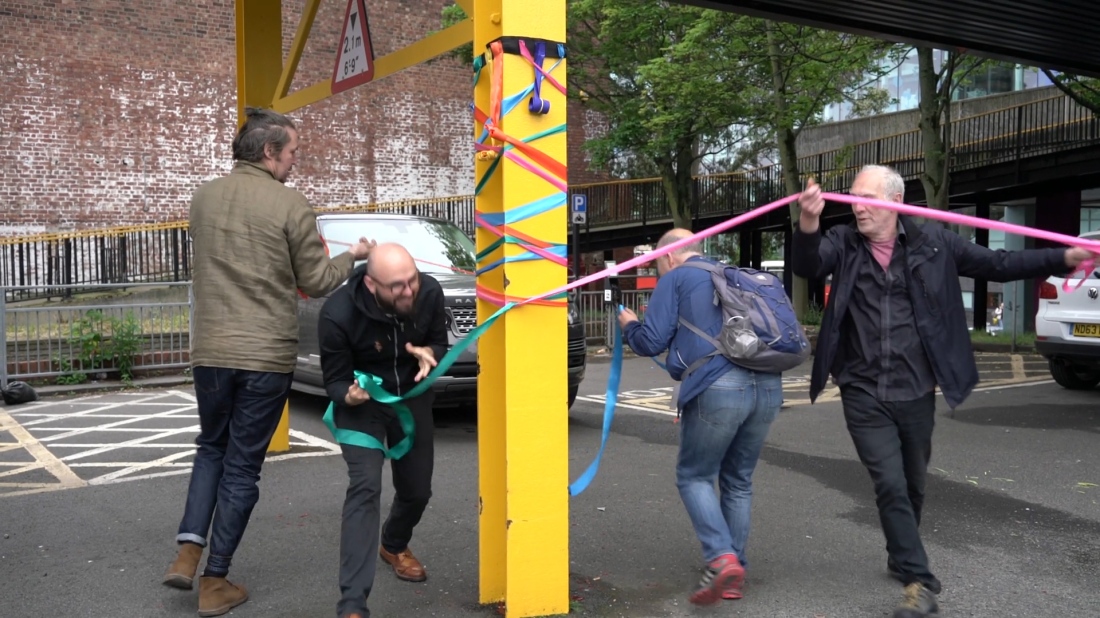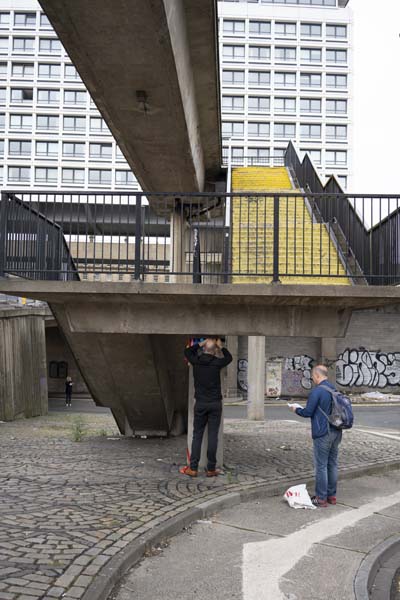
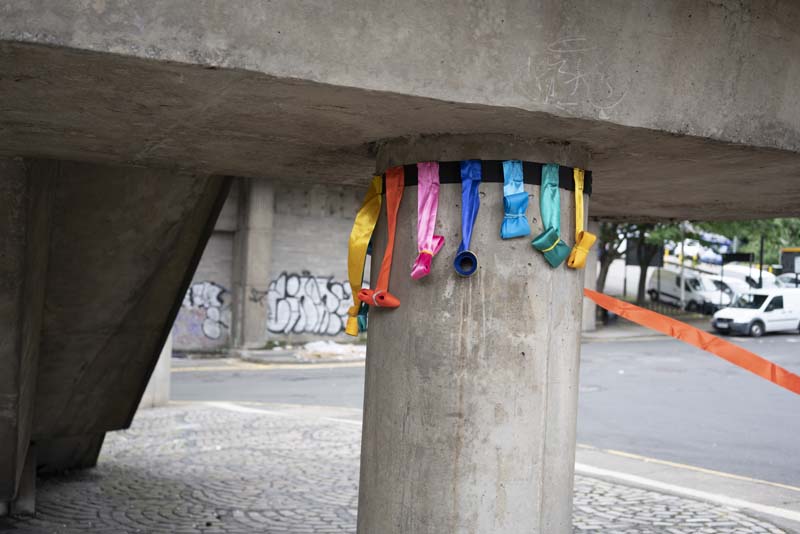
This test focused on the game structure of finding relevant poles and achieving different dances, and wrapping the poles. We went around town, finding poles and areas we thought would be interesting to test. This developed into a gameplay aspect where we were searching for sites that were better, or more epic, or outrageous than the one we had done previous, so perhaps some way of calibrating the location that the task is undertaken, of gaining some form of kudos point for the audacity of where the attempt occurs.

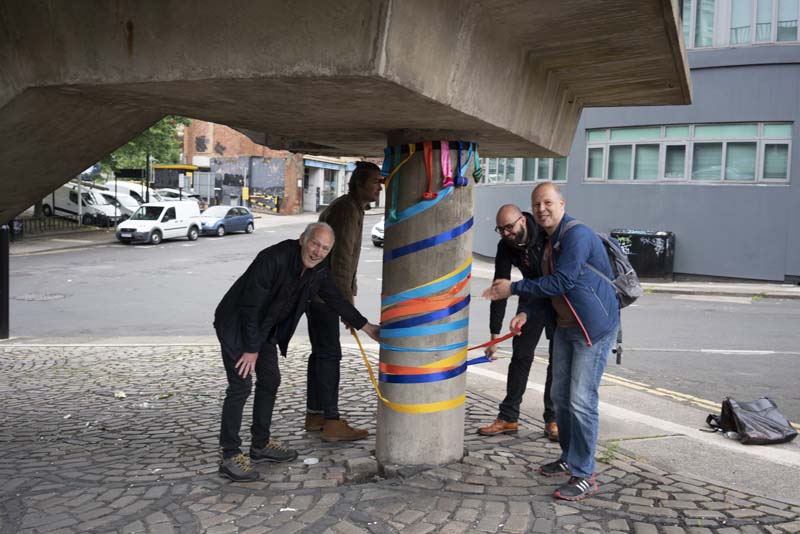
Each pole also has a different dance, I arranged them in order of difficulty. We tried four, a normal circling one, then a barber pole, then a chrysanthemum and then a twister. It did create a puzzle like challenge, the four of us working out how to perform each dance. So it had many challenging aspects. It also gave us a sense of mastery once we had covered the pole, we started to cheer out loud as it progressed. It was suggested we should have a specific cheer or shout for task completion.
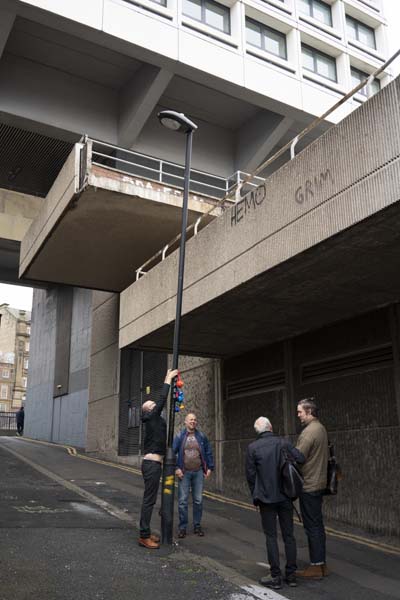
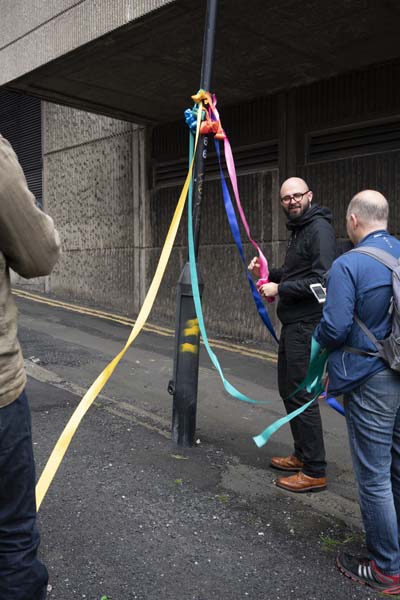
Participant Mick commented on the way the wrap looked, and how hard it was to keep the lines, to make it look good, on objects that are not round enough. So his concentration started to focus on the wrap itself, and trying to keep the line.
There is a sense of jeopardy when you encounter poles that block thoroughfares. The one we undertook in a busy car park, had a surreptitious edge, we had to time when to do it, we had to run out, do the dance quick and then get out of the way again. Yet with only us four it is still hard to get an idea of how all the colours will look, but definitely got a better idea of how it works.
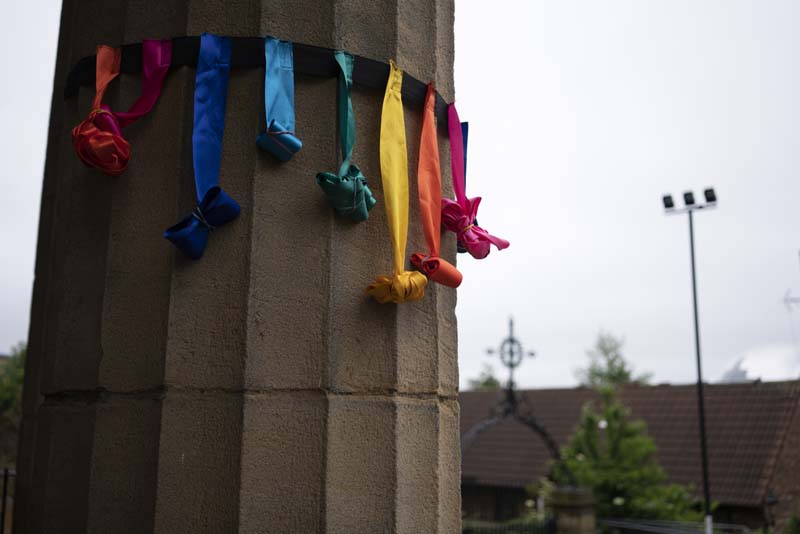

The final routine, the Twister, I couldn’t really work out, and the others were up for trying to solve it, but felt as it was a buy car park, that we would just do one of the routines we had done successfully before. The others desire to conquer the dance showed how invested they were in it. It is a good group dynamic work, and it is more than a maypole, as it becomes a hunt to find the suitable locations and poles. We set ourselves the challenge that each pole needed to be completely different in colour and texture, that there should be contrast.
We attempted the columns outside of an abandoned church. This was interesting, as they all said beforehand, they wanted to do this column, and I thought it too wide. But they used a shoelace to extend the belt so it made its way around the column. Is this part of the game, extending its reach, adapting the game so it can work beyond the created limits of the original game structure.
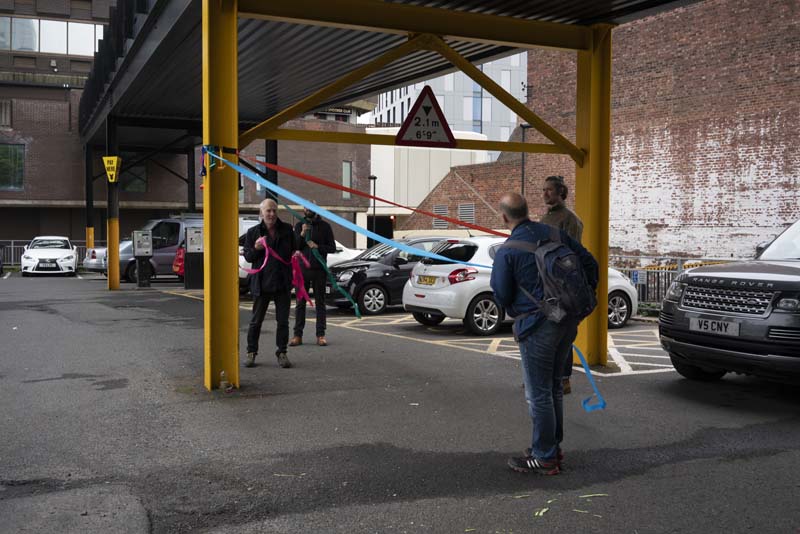
The movement of people, to create a pattern on the pole, is interesting, and much like string games. It makes people have to work together and communicate in order to resolve the problem of doing the routine. At the times when we were wandering the town with intent, it felt like a form of A Situationist derive. It brought to the fore the ideas of games theorist Aarseth and how games encourage exploration in video games and here we extend this notion to how people negotiate the city or town. I was a bit worried at the car park about creating a scene, but Mick said, the whole point is to create a spectacle.
